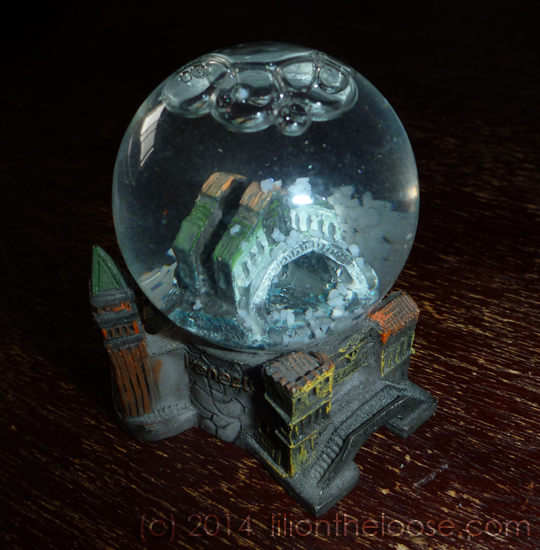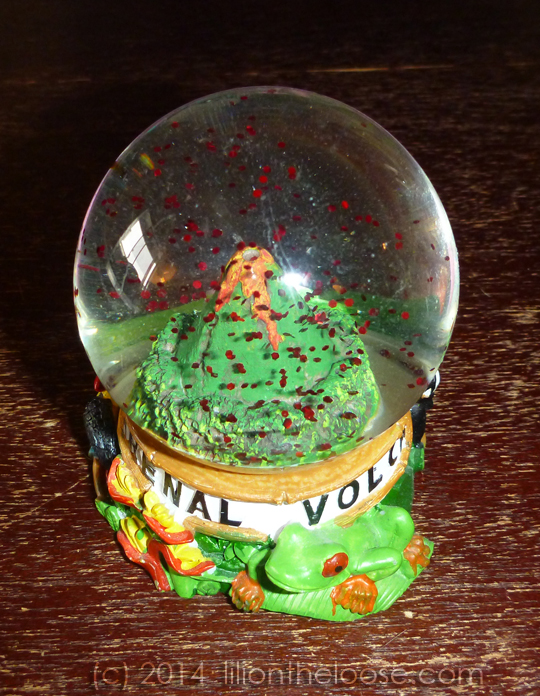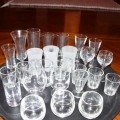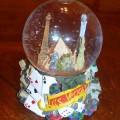Last time we talked about the history of snow globes. Today I wanted to share some things to keep in mind when purchasing a snow globe as a souvenir:
Glass or Plastic: This is really a personal preference but I find most of the plastic snow globes to appear very tacky, so I prefer glass snow globes. However, glass does pose the challenge of transporting a fragile object during the trip, as well as the flight home. It is a good idea is to ask if the merchant has the original packaging or has a way to wrap up the snow globe to protect it. If you do not have room in your bag or are not sure you can safely get it home you should see if the merchant can ship it for you.
The Scene: The first thing you should look at is the scene within the globe to see if it’s even something you want. I like to choose monuments, cityscapes, or nature scenes, while animals are also very common. You will also want to check on the sculpting quality as no one wants a crooked Seattle Space Needle snow globe.
The Paint Job: I next look at the quality of the paint job. Many cheap travel souvenirs are often made in Asia now, and so the paint job quality can vary from one snow globe to the next.
The Water Quality: Next I look at the quality of the water. Say no to any globe that has marine growth, mold, or yellow tinge to the water as that will only get worse with time and is a sign of poor craftsmanship. I check for is how much of an air bubble there is to make sure it is properly filled and has no signs of leaks. I then look at the clarity of the water. Some of the higher end snow globe makers simply use spring or distilled water, however others may put oil, antifreeze, or other chemicals to slow down the snow as it falls through the liquid. Also keep in mind that the water can evaporate out of the snow globe so over time it can have less liquid.
The “Snow”: There are a few things to note and consider when it comes to the “snow” element.
- What is being used as “snow”? Is it a white plastic material? Is it just simply glitter? Does it look correct for the scene it’s portraying?
- Is it clumping together, or does each piece fall separately on its own? Clumping can indicate a problem with the material, or the chemicals in the water than can get worse over time. Also make sure to check and see if any are sticking to the bottom curve of the globe.
- Is there enough material? I’ve seen some globes where there just isn’t a lot of “snow”.
- The rate in which the material falls. I have some globes where the glitter is to heavy for the liquid so it stops “snowing” within a few seconds. While I have some others made with cheaper plastic pellets that just float eternally at the top of the globe.
The Base: Just as important of the scene and paint quality of the miniature is that of the base. Some snow globes have simple bases like those made out of wood. While others may be very intricate and display a scene itself. Beyond making sure the sculpt and paint quality is good, you will want to consider how the base adds to the overall look of the snow globe. And lastly I make sure that the base and globe are attached properly and that the base provides a good hand hold to shake the snow globe.
The Size: Keep in mind that it is hard to carry on a snow globe. Prior to 2012 you weren’t supposed to carry on your snow globe (however I did and never once was questioned.) Now you can bring a 3 oz or less snow globe (about the size of a tennis ball) but it must be packed in your 1 quart bag for liquids. Larger ones are also harder to pack in luggage and it is recommend that you have those shipped properly to your home instead.
Placement at Home: Snow globes are delicate, and newer ones can contain antifreeze, so it is best to keep them out of reach of children and pets. You will also want to keep it out of temperature extremes as snow globes can freeze, and with enough heat the water can evaporate. You will also want to keep them out of direct sunlight for two reasons. 1. You do not want the paint to fade. And 2. In extreme cases the water can act like a magnifying glass, and turn the sun’s rays into a pinpoint of light that can start a fire.
Also it is good to keep in mind that the main types of snow globes you find while traveling are mass produced and generally do not appreciate in value to collectors. Happy shopping!

Souvenir Saturday is an every-other week series on the items that represent travel memories.






Leave a Reply